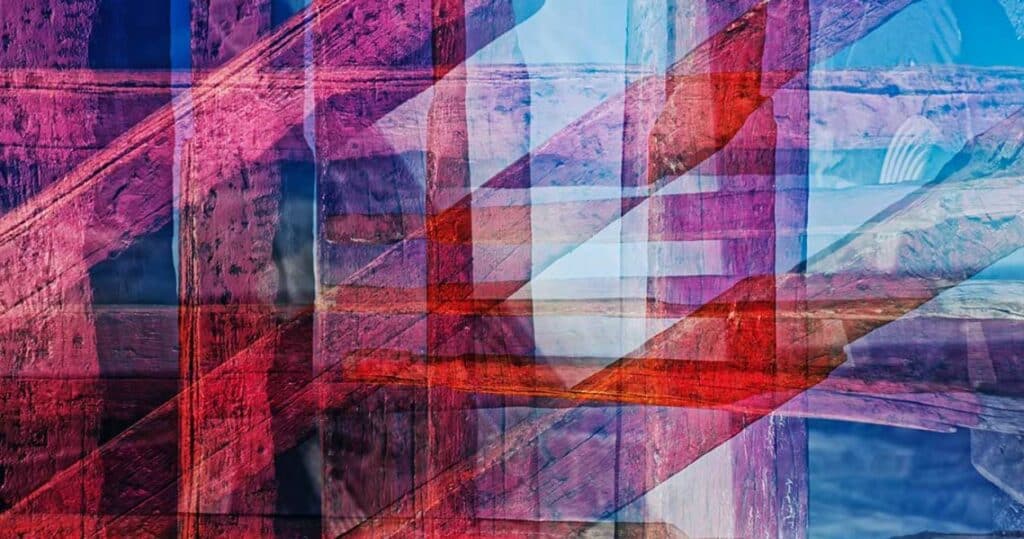“Brushing Against Injustice: 10 Visionary Artists Illuminating Social Equality Through Art”
Despite the fact that social inequality is still prevalent in the world, artists have emerged as significant voices for activism. As a result of their inventiveness and singular points of view, they tackle urgent problems, question established standards, and spark conversations that require our attention. The purpose of this article is to shed light on the numerous types of inequality that continue to exist in our society by recognising and honouring ten artists who actively campaign for social justice via their profession.
Art has undeniably played an important part in reflecting and questioning society conventions, igniting conversations, and eventually advancing social justice since the beginning of time. Artist projects from all around the world have used their creative expressions to speak out against significant social concerns such as racism, injustice, gender discrimination, and many others.
Empowering Voices: 10 Artists Championing Social Justice Through Their Art
In a society that is still rife with social injustice, artists have emerged as powerful change agents. Through the use of their brushes, lenses, and creative brains, artists tackle the complexity of societal inequality, thereby generating meaningful statements that challenge the status quo. Within the scope of this investigation, we shed light on ten extraordinary artists who are employing their artistic practises as a means of actively combating social inequity.
1. Banksy: Street Art as a Political Statement

The mysterious street artist known as Banksy creates murals that go beyond the confines of concrete walls and go straight to the core of social and political issues. His paintings, which are both satirical and politically provocative, provide a challenge to authority and generate conversations on a wide range of themes, including economic inequality and human rights advocacy.
Key Aspects: Banksy
| Aspects | Description |
| Medium | Murals and street art |
| Themes | Political and social commentary, economic disparity, human rights |
| Impact | Sparks conversations, challenges authority, prompts critical thinking |
| Notable Work | Dismaland, “Girl with a Balloon,” “There Is Always Hope” |
| Influence | Global recognition, influence on street art, maintains anonymity |
2. Yara Said: Giving a Voice to the Voiceless

Artist and activist Yara Said, who hails from Syria, paints a powerful portrait of the human cost of conflict. Her artwork presents a narrative that speaks eloquently about the struggle of refugees and the resilience of the human spirit. It serves as a platform for those who are frequently silenced by war.
Key Aspects: Yara Said
| Aspects | Description |
| Medium | Illustrations and visual storytelling |
| Themes | Syrian conflict, refugee rights, impact of war on women and children |
| Impact | Amplifies voices of the marginalisedndraises awareness internationally |
| Notable Work | Illustrations documenting the Syrian conflict, “A photo a day in Syria” |
| Influence | Humanitarian impact, sheds light on lesser-known aspects of conflict |
3. Ai Weiwei: Dissent Through Art

Ai Weiwei, a Chinese artist who has a dissident stance, uses his artistic talent as a means of expressing his disapproval. Through controversial exhibits, installations, and social media activity, he criticises the position that the Chinese government takes on human rights. As a result, he encourages others to question authority and advocate for justice.
Key Aspects: Ai Weiwei
| Aspects | Description |
| Medium | Installations, social media activism, exhibits |
| Themes | Human rights, dissent, criticism of the Chinese government |
| Impact | Promotes activism, challenges political authority, global influence |
| Notable Work | “Remembering,” “Sunflower Seeds,” social media presence |
| Influence | International recognition, political activism, outspoken critique |
4. Tatyana Fazlalizadeh: Stop Telling Women to Smile

Through the project “Stop Telling Women to Smile,” Tatyana Fazlalizadeh takes a direct approach to the issue of gender-based harassment that occurs on the street. Her stunning photographs reclaim public spaces, compelling viewers to confront the systemic nature of sexism and the urgent need for cultural reform. Her images are both strong and compelling.
Key Aspects: Tanorms and Fazlalizadeh
| Aspects | Description |
| Medium | Portraiture, street art, public installations |
| Themes | Gender-based street harassment, reclaiming public spaces for women |
| Impact | Raises awareness on sexism, sparks conversations, empowers women |
| Notable Work | “Stop Telling Women to Smile” project, “Resistance, Rebellion, Resilience” mural series |
| Influence | Feminist art activism, challenges societal norms, public engagement |
5. JR: Portraits of the Human Spirit

The larger-than-life pictures that the French artist JR creates bring underrepresented cultures into the spotlight. It is via the act of pasting these photos onto metropolitan environments that he challenges preconceived notions, so building empathy and understanding for individuals who are frequently confined to the borders of society.
Key Aspects: JR
| Aspects | Description |
| Medium | Large-scale portraits, urban installations |
| Themes | Marginalized communities, human dignity, empathy |
| Impact | Humanizes overlooked individuals, fosters empathy and understanding |
| Notable Work | “Inside Out” global participatory art project, “Women Are Heroes” series |
| Influence | International recognition, participatory art, human rights advocacy |
6. Dread Scott: Art as a Catalyst for Change

Dread Scott’s works are known for their controversial nature, which challenges the standards of society and prompts awkward talks regarding racism in the system. His artwork acts as a catalyst for change, compelling spectators to confront the unsettling realities that lay at the root of racial inequity.
Key Aspects: Dread Scott
| Aspects | Description |
| Medium | Conceptual art, installations, multimedia |
| Themes | Systemic racism, racial injustice, challenging societal norms |
| Impact | Provokes thought, prompts uncomfortable conversations, challenges status quo |
| Notable Work | “What Is the Proper Way to Display a U.S. Flag?” installation, “Slave Rebellion Reenactment” project |
| Influence | Provocative art, catalyst for social change, intersectionality |
7. Njideka Akunyili Crosby: Cultural Identity and the Diaspora

It is the artist Njideka Akunyili Crosby, who was born in Nigeria, who investigates the complexities of cultural identification and the experience of being an immigrant. Her intricate collages challenge preconceived notions and encourage a more profound comprehension of one’s identity by bringing together multiple aspects of her life, including her Nigerian origin and her upbringing in the United States.
Key Aspects: Njideka Akunyili Crosby
| Aspects | Description |
| Medium | Collage, visual storytelling, fine art |
| Themes | Cultural identity, immigrant experience, Nigerian heritage |
| Impact | Challenges stereotypes, fosters understanding of complex identities |
| Notable Work | “The Beautyful Ones” series, “I Refuse to Be Invisible” |
| Influence | Recognition in contemporary art, representation of diasporic experiences |
8. Hank Willis Thomas: Confronting Racial Injustice

Photographs, sculptures, and installations are some of the mediums that Hank Willis Thomas employs in order to challenge racial inequity and institutional racism. In order to contribute to an ongoing conversation about justice and equality, his artwork encourages viewers to consider their own preconceived notions and prejudices.
Key Aspects: Hank Willis Thoma
| Aspects | Description |
| Medium | Photography, sculpture, multimedia installations |
| Themes | Racial inequality, systemic racism, bias reflection |
| Impact | Prompts self-reflection, challenges biases, contributes to racial dialogue |
| Notable Work | “Branded” series, “All Power to All People” sculpture |
| Influence | Intersection of art and activism, museum exhibitions, racial justice advocacy |
9. Rirkrit Tiravanija: Art as a Shared Experience

Rirkrit Tiravanija, a modern artist from Thailand, creates immersive experiences that address social issues. He does this by blurring the barriers between art and life. His approach challenges individuals to become agents of change by encouraging active engagement, which in turn develops a sense of community and shared responsibility.
Key Aspects: Rirkrit Tiravanija
| Aspects | Description |
| Medium | Immersive experiences, participatory art |
| Themes | Social issues, shared responsibility, community building |
| Impact | Creates communal spaces, fosters dialogue, blurs art-life boundaries |
| Notable Work | “Untitled (Free)” participatory installations, “Pad Thai” cooking performances |
| Influence | Pioneer of relational aesthetics, community engagement, experiential art |
10. Guerrilla Girls: Feminist Activism in Art

Since the 1980s, a group of feminist artists known as the Guerrilla Girls have been working around the clock to expose gender and racial injustices that exist within the art world. They are demanding accountability and pushing institutions to address the lack of diversity in the art world through the use of their provocative posters, performances, and rallies through which they are demanding accountability.
Key Aspects: Guerrilla Girls
| Aspects | Description |
| Medium | Posters, performances, protests |
| Themes | Gender and racial inequalities in the art world, anonymity |
| Impact | Advocates for diversity in art, sparks institutional change, humor as a tool for activism |
| Notable Work | “Do Women Have to Be Naked to Get into the Met. Museum?” poster, public interventions |
| Influence | Feminist art activism, longevity in challenging art institutions, use of humor |
These ten Famous artists are shining examples of how art can be used as a tool for mental health advocacy by utilising their unique creative abilities to combat stigmas, advance knowledge, and encourage empathy. Their contributions are a tribute to the transformative power of art in igniting conversations that matter, and as we navigate the complex landscape of mental health, these contributions serve as an important guidepost for us.
In order to illustrate that art is a powerful weapon against social inequity, these ten artists have been selected. They encourage us to question, ponder, and take action by addressing a wide range of issues, including things like discrimination based on gender and racial injustice. Their art communicates volumes, motivating us to envision a future that is more just and equitable. In a world where words sometimes fail to do justice, their art truly says volumes.
FAQ
How does art influence social change?
Art contributes to social change by facilitating dialogue, challenging societal conventions, and encouraging empathy. It has the ability to raise consciousness, inspire action, and stimulate thought, making it a powerful force for social change.
How can I support artists advocating for social justice?
You can support these artists by sharing their work, attending their exhibitions, and engaging in conversations about the social issues they address. Purchasing their art and supporting organizations that promote social justice through the arts are also impactful ways to contribute.
Can art truly make a difference in addressing social inequality?
Absolutely. Art has the ability to provoke emotions, challenge perspectives, and inspire action. By shining a light on social issues, artists contribute to a broader conversation that can lead to increased awareness, understanding, and ultimately, positive change.





